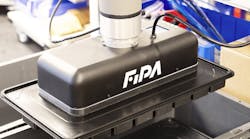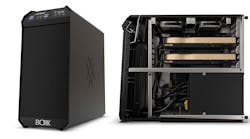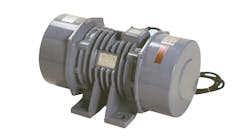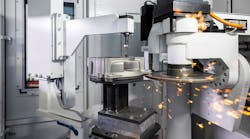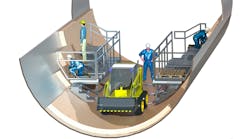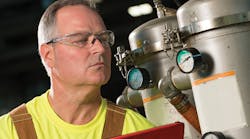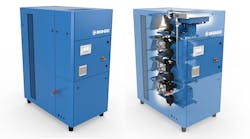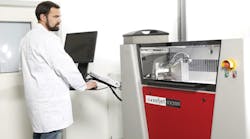ASK Chemicals is introducing new binders for 3D sand printing, combining print head compatibility, dimensional accuracy, and productivity.
“With the development of ever-faster printers, especially in recent years, 3D sand printing offers foundries completely new possibilities and opportunities. Of course, binder technology has to be developed further, especially for these new productive systems,” Dr. Jens Müller, ASK’s global head of R&D and innovation.
Muller noted that ASK’s new formulations for inorganic and organic sand core production will be presented this month at GIFA 2019.
3D sand printing using powder binder jetting eliminates contour-forming models and core tools during production of sand cores. The geometry of the sand cores is developed digitally, based on CAD models.
Next, the recoater automatically applies a layer of quartz sand just a few hundred micrometers thick. Then, the binder liquid is selectively applied to the sand bed via the print head. The process of layered sand application by means of the recoater and selective binder input via the print head is repeated according to the specifications of the digital CAD model.
Finally, the binder-free support sand is removed, and the printed component may be taken to a post-curing process.
In successful 3D sand printing, the compatibility and durability of the print head components along with the chemical components of the binder fluid are as critical as the application and dripping behavior of the fluid. This is collectively referred to as “print head compatibility.”
The physical and chemical properties of the binder fluid are critical this process. The physical effects during selective binder input onto the sand bed, such as the migration of the fluid into the unprinted areas of the support sand, must be understood and controlled in order to ensure a high dimensional stability and low finishing cost of the sand cores produced.
“Of course, 3D binders still also have to meet high thermal stability requirements to withstand the stresses during the casting process,” explained Müller.
ASK Chemicals’ NOVASET 3D phenolic resin binder for cold curing has reduced the labor-intensive finishing effort and improved the process efficiency over standard binders.
NOVASET 3D has a low veining tendency and guarantees clean casting surfaces for all types of casting.
The inorganic two-component system INOTEC 3D, consisting of an INOTEC 3D printing fluid and an INOTEC 3D promoter, is applicable for hot-curing additive manufacturing processes. “As a productive inorganic binder system, INOTEC 3D stands for zero emissions during core productionand core storage and when using the sand cores in the casting process,” emphasized Dr. Christian Appelt, global business manager for inorganic binder systems. Another advantage is the low finishing effort of the sand cores produced, which results in castings with high dimensional accuracy and surface quality due to the high thermal stability.
ASK emphasized that INOTEC 3D supports current trends in engine casting for light metals.
At GIFA 2019, ASK will demonstrate 3D sand printing with the INOTEC 3D inorganic binder on the new voxeljet VX1000-S printer.
